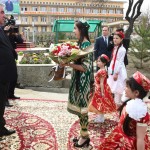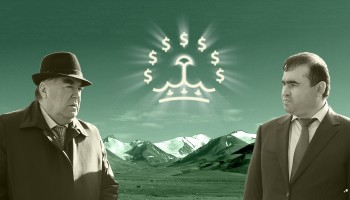Faroz operates a metallurgical plant in the ancient city of Hisor that it claims is one of the largest industrial facilities in the country.
According to Tajik officials, Faroz was going to invest US$ 12.6 million into the plant. Another US$ 8.4 million was supposed to be invested by a little-known Chinese company called Yu Liang Fu.
The history of the plant’s construction makes clear that President Rahmon was personally interested in its success and that his government undertook numerous steps to help it get off the ground.
Rahmon visited the site personally when construction began in 2012. Two years later, at an official government session, he named as one of the important enterprises “built for the people” to coincide with the 25th anniversary of Tajikistan’s independence.
It clearly had high-level help.
In the first place, President Rahmon had allocated 15 hectares of land for the plant’s unlimited use. Most was valuable arable land, which is of very limited supply in the region, that belonged to a local farmers’ cooperative. Despite this, the plant received the land for a mere US$ 130,000.
In 2013, as construction was progressing, Rahmon freed its operator from its obligations to pay VAT and customs duties on imported equipment during construction. (These requirements were waived once again after the plant opened.)
In 2015, during his own visit, Prime Minister Kohir Rasulzoda instructed responsible officials to ensure that the plant would be provided with both electricity and raw materials in a timely manner. In Tajikistan, electricity production is controlled by the state.
President Rahmon visited to the plant again when it finally opened in 2016, several years behind schedule. It had apparently faced some difficulties with the Chinese co-investor; a temporary halt in construction was attributed by local media to delays in the delivery of equipment from China. By the time it opened, the Chinese were no longer involved.




